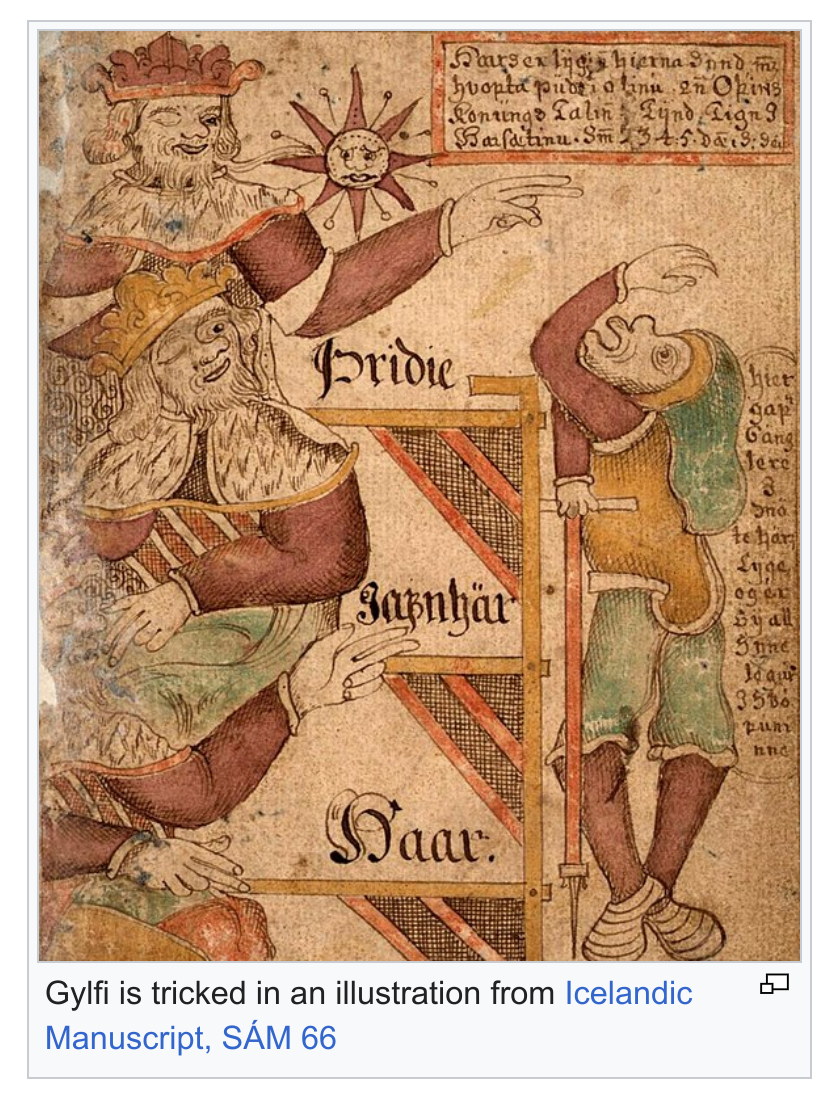As per DNA research, practically all northern ethnic Russians are by DNA ethnic Finns (see
here, Fig 3. part A). Moving geographically towards south and central Europe, they/we gradually become the ethnic Slavs by DNA (read: Ukrainians), representing some other admixture to the basic Finnic stock of north-eastern corner of Europe. Historically in antiquity this exact same gradual change also marked the difference between the central and northern Russian-Finnish regions and the more southern Scythian (Saka), Gothic and at times even Greek influences towards the Black Sea. In that historical demographical-geographical context one could assume a Scythian-Finnish cultural exchange, perhaps via medium of Russian river trade system connecting Baltic Sea and especially the Gotland island market place with the Silk Road (see
here).
In OL narrative, only one Finnish prince or god-prince is named (THÍR). Aside of that we know the medieval Norse names of those same Finnish war leaders, princes and commanders due to very close parallels with Norse legends dealing with the issue of conquest of Scandinavia and Denmark (Fŕa Fornjóti/Fundinn Noregr plus Ynglinga saga). It has been recognised since the 1980s, by latest, by Finnish academics that these Norse saga names are not random, but are based on actual Finnish source material characters and dynasties (various SKVR, SKS, SLS etc sources, see
here), allowing for naming most of those characters also by their native names. No Persian Magus names appear therein, nor in the oldest archeologically attested OL echo in Weld-Blundell prism at c. 1800 BC. The OL THÍR is even better match than Norse Þorri as it's more true to the source (Tiera, as in Iku-Tiera and Uk[k]otiera of SKVR poetry).
Thus the assumption that Magis of OL is representative of the Finnish seer/sage/wizard class attested also from elsewhere, especially as the pan-European word 'might' is attested also in plentiful Finnish usage e.g. word mahti in SKVR poetry, practically all cultural heroes doing double-duty as spell casters. I personally would tie-in here also Bock family saga and the strict Finnish Aser-Vaner social class system of it, as the upper level Aser (Æsir) do not refer only to 'gods', but also in traditions to trickster magicians able to do illusions. After all, in Norse traditions (Gylfaginning) it's the Æsir Odin who confuses the Finno-Scandinavian Fornjót lineage king Gylfi (i.e. Magi at time of Wodin) and not the other way around. There were later traditions here and there mixing Finns with Persian magis or Scythians*, but as far as I know these are of newer story strata and are not present in the older texts.
Image: Finno-Scandinavian king Gylfi tricked by three Æsir, with all three having names of Odin – a medieval Norse viewpoint opposite to that of OL narrative.

- Gylfaginning.jpg (843.52 KiB) Viewed 2285 times
* These are: 1. textual narrative similarity between Saxo's to Mit-othin/Oller fleeing to Finland/Denmark (Gesta Danorum 1.7.2-3, 3.4.11-12) to tale of Bardiya and Persian Magus Gaumāta (i.e. name Gautama as in Gautama Buddha); 2. narrative similarity between Biblical story of Persian magis being first ones to meet infant Jesus and his family and Finno-Norse-Christian tales of Nordic Jesus or his pregnant mother met and condemned by Finnish elite (Bock family saga, reflected in SKVR poetry on Väinämöinen's judgement on pregnant Marjatta; pope Innocentius III quoted in ch. XIX of Chronicle of Henry of Livonia; as model for main hero in Norse saga Eireks saga víðförla), down to names e.g. Balthazar Balder the Asar or Lemminkäinen, Casper the Per or Ukko Väinämöinen, Melchior the Melqart-Hercules strongman archetype i.e Ilmarinen the smith; 3. the Scythianus narrative matches the Bock family saga Jesus' life details, again with connection to Buddha on both sources (Buddas in Scythianus story, Jesus and Buddha both of Aser lineage in Bock family saga).
